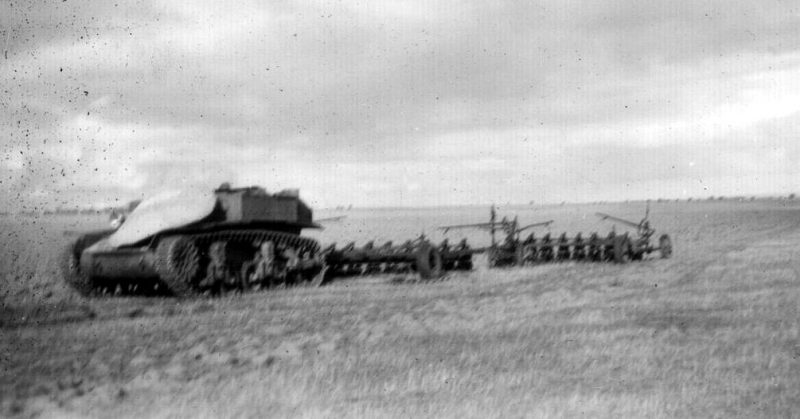Even though they put tanks back in working order, how can you not love an organization with a catchy title like the Busted Arse Tank Repairs and Co. (BATRAC)?
Contrary to what the title might imply, the Australian company is not enamored with war. But they appreciate the sacrifices made by veterans, and enjoy seeing obsolete armor equipment in working order, as farming implements. The practice isn’t new. At the end of the Second World War, military vehicles were sold cheap, and many were re-located to agricultural properties since bulldozers and similar equipment weren’t readily available for use.
John McMahon of the Busted Arse, a cattle rancher in the Oberon district, has a shed with about a dozen ex-military vehicles which includes several jeeps, a Centurion tank, five Matilda tanks, and three Bren Gun Carriers. The collection was started by his father, John.
The number of farmers who used former military equipment isn’t precisely known, said Shane Casey, said senior curator for Military Heraldry and Technology of the Australian War Memorial.
McMahon and fellow enthusiasts meet most weekends to work on bringing the hulks back to working order. When not working on equipment they take the tanks out and have a bit of fun on the run. A half-dozen people will clamber aboard and enjoy the ride.
Operating them is not cheap, however. The Matilda burns approximately six gallons of diesel per hour, McMahon said. They have one that consumes 13 liters of gas for every 100 hundred yards.
At one time, for commemorative events, they would take a Matilda tank to town and trundle along a street, but now since the tank is tricky to maneuver, getting a permit isn’t as easy. McMahon said authorities don’t like a tracked vehicle on a road even though it hardly leaves any trace of having been there.
Increasing interest from collectors coupled with the difficulty of getting parts has made this type of military equipment valuable, ABC News reported.
For McMahon, joy is derived from the part they played in contributing to the farm’s creation, and they remind him of his father.
Working on them was very enjoyable to Dad, something he was passionate about, too. They’re carrying on the tradition, he said.
